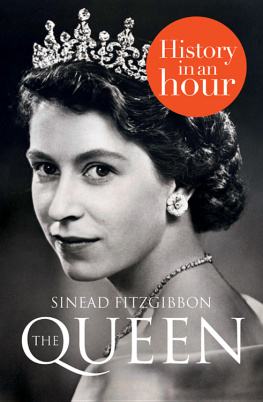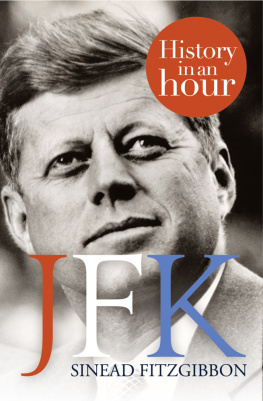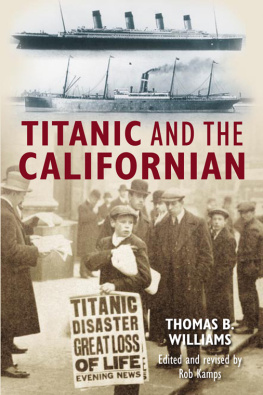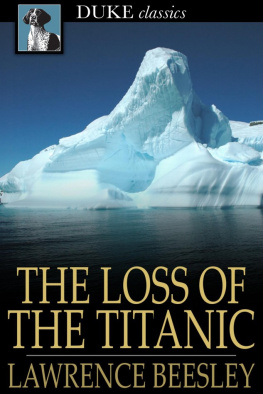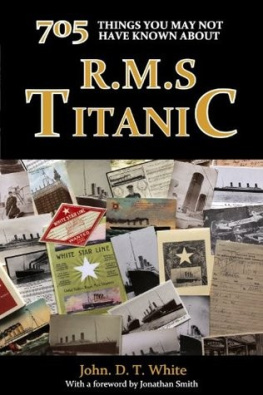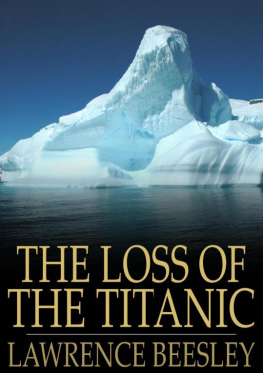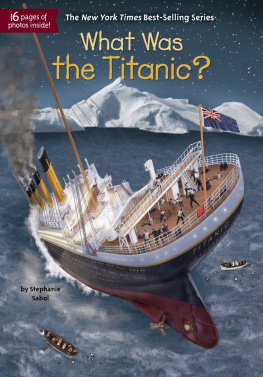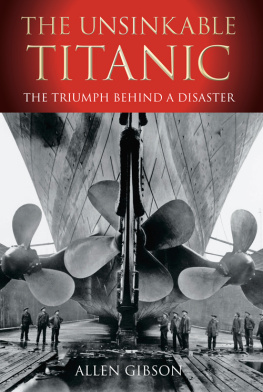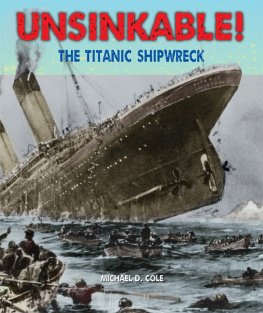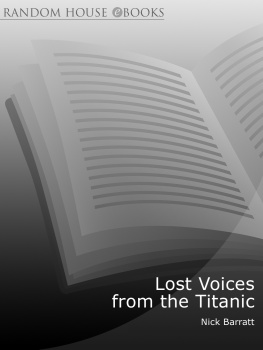History in an Hour is a series of ebooks to help the reader learn the basic facts of a given subject area. Everything you need to know is presented in a straightforward narrative and in chronological order. No embedded links to divert your attention, nor a daunting book of 600 pages with a 35-page introduction. Just straight in, to the point, sixty minutes, done. Then, having absorbed the basics, you may feel inspired to explore further.
Give yourself sixty minutes and see what you can learn...
To find out more visit http://historyinanhour.com or follow us on twitter: http://twitter.com/historyinanhour
On Wednesday 10 April 1912, RMS Titanic embarked on her maiden voyage, carrying over 2,000 passengers, as she set sail from the port of Southampton, England, bound for New York City.
RMS Titanic was widely acknowledged to be the jewel in the crown of its owners, the White Star Line. The newly built liner was the product of the very latest advances in nautical engineering and a major achievement for its creators, Belfast shipbuilders, Harland & Wolff. It was the largest floating vessel the world had ever seen and, endowed as it was with every conceivable luxury, it was also the most opulent.
It is hardly surprising then, that the much-publicized launch of this gigantic vessel attracted intense media interest. On both sides of the Atlantic, Titanic was making headlines in national newspapers, while the cream of British and American high society, eager to bask in Titanics reflected glory, were lining up to book a passage on her maiden voyage.
Much of the excitement which accompanied Titanics unveiling was based on the expectation that it would smash the transatlantic speed record, previously held by the Mauretania, which was owned by White Stars arch-rivals, the Cunard Line. This quest for speed did indeed see RMS Titanic sailing into the pages of history but, tragically, for all the wrong reasons.
Sadly, for her approximately 2,000 awe-struck passengers and crew, Titanic was not destined to reach its final destination. Four days into the week-long voyage, this triumph of human ingenuity and engineering struck a large iceberg in the middle of the Atlantic Ocean. In just over two hours, she had descended to her watery grave on the ocean floor, with the loss of over 1,500 lives.
This is the story of how, thanks in large part to a calamitous chain of unfortunate events combined with a litany of human errors, the maiden voyage of a supposedly unsinkable ship became one of the worst maritime disasters in peacetime history.
This is the story of RMS Titanic.
In the latter half of the nineteenth century, transatlantic sea travel was fast becoming a lucrative business. Passenger numbers were on the increase, thanks in large part to the hordes of migrs leaving Europe in search of a better life in America, while steamships also profited by ferrying mail between the US and Britain.
Since its owner, Samuel Cunard, was awarded the first British transatlantic mail contract in 1839, the Cunard Line had operated a near-monopoly on this highly profitable route.
Cunard Line Poster, 1875
This all changed, however, when Thomas Ismay purchased the White Star Line in 1869. Operating in direct competition with the Cunard Line, the White Star Lines entry into the transatlantic market marked the beginning of a decade-long battle between the two companies as they vied for dominance of the Atlantic Ocean. To complicate matters, they were also fighting off stiff competition from emergent shipping firms from Germany. The stakes could not have been higher.
By 1907, with the impending maiden voyage of their new liner, the Lusitania, Cunard seemed to be once again gaining the upper hand. The Lusitania was the first in a new generation of superliners, and was soon joined by a sister steamship, the Mauretania, which was also nearing completion. Weighing approximately 30,000 gross tonnes and with a length of 790 feet, the Lusitania and the Mauretania were larger and more luxurious than any of their predecessors. They were also to be the fastest. It was widely expected that the Blue Riband the award given to the fastest ship to cross the Atlantic would go to either one or the other.
White Star Line Logo
Unsurprisingly, executives at the White Star Line were coming under increasing pressure to catch up with Cunard.
The White Star Line makes a Comeback
The White Star Line was now part of the American financier J. P. Morgans conglomerate of shipping companies, known as International Mercantile Marine. J. Bruce Ismay, who had succeeded his father at the helm of White Star in 1899, had sold the company to Morgan (pictured below) in 1902 on the understanding that he stayed on as Chairman and Managing Director. Thus, with almost limitless financial resources from his ber-wealthy investor, the younger Ismay set about plotting White Stars comeback.
J. P. Morgan
In the summer of 1907, Ismay and his wife attended a dinner at the London home of Lord and Lady Pirrie. A partner in the Belfast shipbuilding firm Harland & Wolff, Pirries business relied heavily on the White Star Line for new ship-building contracts, so he had a vested interest in the continuing success of Ismays company. It is widely believed that over the course of this dinner the two men concocted an audacious plan to regain the advantage over the Cunard Line.
With the cavalier attitude of those spending someone elses money, Pirrie and Ismay (pictured together below) decided that Harland & Wolff would build three state-of-the-art ships for the White Star Line. The new liners would be gigantic at least 50 per cent larger and 100 feet longer than both the Lusitania and the Mauretania. They would offer passengers unparalleled luxury and comfort.
Pirrie and Ismay on board the Titanic
Photograph by Robert John Welch (18591936), official photographer for Harland & Wolff
Suitable names were needed for these sister ships, names which would be commensurate with their size and grandeur they settled on the Olympic, the Titanic and the Britannic.
The Building of a Leviathan
After this initial dinner meeting, Pirrie and Ismay quickly set to work. The proposed ships would be so huge that Harland & Wolff would need to overhaul their entire operation in order to accommodate them. The shipyards at Harland & Wolff underwent a significant re-vamp, which involved converting their three existing berths into two, over which a 220-foot-high gantry was installed. For his part, Ismay set about lobbying the New York Harbour Board for permission to build a new pier, large enough to berth his monstrous new vessels. Pirries designs were endlessly debated, while Ismay encountered difficult negotiations with the Harbour Board.



